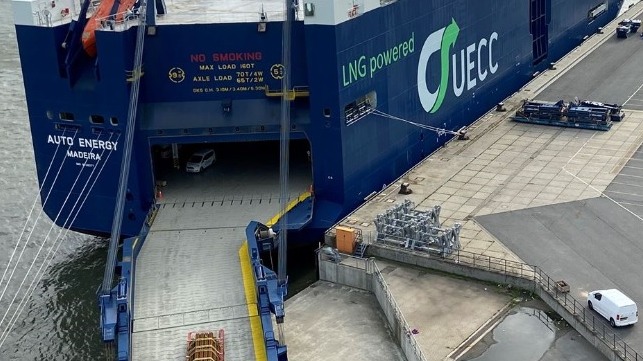UECC Backs Stringent EU Carbon Pricing for Shipping

European ro/ro operator UECC announced Wednesday that it is backing “aggressive” targets for the inclusion of shipping in the EU Emissions Trading System (ETS). UECC was an early first-mover in investing in low-carbon alternative fuels, and the company believes that the ETS will level the playing field in Europe by "hugely increasing" the operating costs for its competitors' carbon-intensive vessels.
The EU’s 'Fit for 55’ policy package includes a proposal to expand the ETS to cover CO2 emissions from the shipping industry for the first time - one element of the European Commission's goal of reducing EU greenhouse gas emissions by at least 55 percent by 2030 (compared with 1990 levels).
ETS regulation would mean that all large ships over 5000 gross tonnes calling at EU ports would be required to pay for all of their emissions, along with half of the emissions for all voyages starting or ending at EU ports - regardless of flag state. The proposal is still subject to ratification.
To ease the financial pain for ship operators, the EU has proposed to phase in the measure starting from 2023, when they would be liable for 20 percent of their emissions, increasing to 45 percent in 2024, 70 percent in 2025 and the full amount in 2026.
Based on current prices, ships would be required to pay more than $58 per tonne of CO2 emitted once the system is fully phased in, which would make the use of marine fuel oil between 20-30 percent more expensive. The effective bunker cost increase could rise by 50 percent if carbon-credit prices go up.
"Putting a price on carbon is unfortunately the only way we will see the huge decarbonization of the fleet that is required by incentivizing the use of green technologies and alternative fuels to lower emissions, though this should be a moral and ethical obligation," said UECC’s energy and sustainability manager, Daniel Gent. "There is no doubt this will be a huge commercial driver for green investments and there will be severe financial penalties for those owners that have failed to invest in their fleets by 2026. Inaction will prove costly."
Gent expects UECC to cut its fleet's carbon emissions by 35,000 tonnes by 2025, thanks in large part to its early investment in LNG propulsion. “Our strategy is to demonstrate to the industry that decarbonization can be achieved incrementally and in a scalable way by rolling out pilot projects with clients for carbon-neutral transport of cargoes, thereby making the market more competitive for green owners,” he says.
Gent called for 50 percent of the revenue from auctioning of maritime carbon allocations under the ETS should be put back into a Maritime Transport Decarbonisation Fund in order to help finance the industry's green transition. The fund could also help to stabilize the carbon price.
“There is no doubt this will be a huge commercial driver for green investments and there will be severe financial penalties for those owners that have failed to invest in their fleets by 2026. Inaction will prove costly,” he concluded.
LNG transition
Industry coalition SEA\LNG expects that the EU's new carbon policies will generate significant new uptake for liquefied natural gas as a marine fuel. However, environmental activists have questioned the wisdom of incentivizing the use of LNG in the EU, as the fuel is still fossil-based, and it offers a best-case well to wake GHG emissions reduction of only 23 percent. Some researchers estimate that certain LNG fuel applications could yield even less GHG improvement, or even a net increase in near-term GHG emissions - depending upon the scenario and study assumptions.
Research on the rate of upstream natural gas leakage has created new questions about the emissions profile of this fuel in all uses, including transport, home heating and power generation. Natural gas is 95 percent methane, a gas with roughly 80 times the warming potential of CO2 over a two-decade term. Some amount of this gas inevitably leaks out during production and distribution; the exact volume is a matter of debate. Given methane's GHG potency, the leakage rate plays a significant role in well-to-wake calculations of GHG intensity for LNG.
